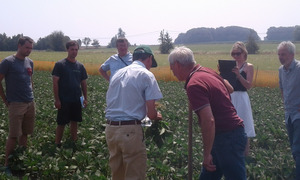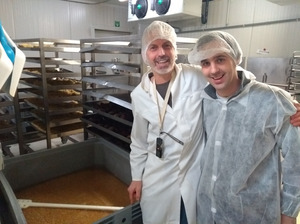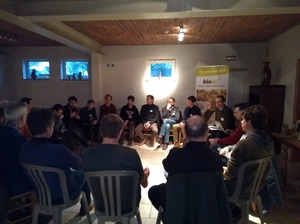Case study 18: Diversification of organic arable rotations through the production of minor grain crops as mono- or intercrop for local processing towards local human consumption, BE
Cluster 4: Diversification through intercropping with a special focus on grain legumes
Food patterns and consumer expectations are changing. Among others, there is a growing interest in vegetarian food, organic farming and produce of local origin. Two organic farmers and one organic processor of vegetarian food are exploring new opportunities that respond to these trends. They are investigating the cultivation of new crops that can diversify traditional arable rotations (which were made up mostly of cereals for feed) and receive fair remuneration within their value chain.
As other small and similar initiatives arise, mutual sharing of experiences has to be facilitated.



What were the main problems underlying the emergence of the case study?
The tradition of local production of grain crops (even cereals for baking) for local consumption is almost lost in Flanders. Four challenges were initially identified:
- (Re)discovery of agronomic craftsmanship and experience with (intercropped) grain crops for food. The current focus is on soybeans, lentils and quinoa.
- Access to primary and small-scale post-harvest intermediate processing (drying, sorting, etc) to make harvested seeds suitable as raw material for processing.
- To secure food safety standards and administration (tailored to industrial processes)
- To receive fair remuneration and to distribute risk throughout the value chain, knowing that, due to high production costs and small scale, we cannot be competitive with global or European market prices.
Meanwhile two further challenges have been added:
- A mutual dialogue is needed with further partners in the value chain (retail and even consumers).
- Similar initiatives arise and struggle with the same problems but working together is unlikely as each often works only in their local region.
How was the problem addressed and which actors were involved?
In accordance with the overall strategy of the DiverIMPACTS case studies, bringing together the two farmers and the processor to discuss shared values, was considered as a first and crucial step and resulted in mutual concern, trust and involvement. The ‘experiment’ is as important as the result.
Farmers themselves invested a lot of time and energy to enable their new crops to succeed and looked for opportunities for desirable intermediate processing. Links have been made with foreign experiences and other (national) research projects within and outside DiverIMPACTS to optimise crop cultivation techniques.
The processor has been an essential actor in this case study, taking on a strong coordination role. He integrated the case study as an innovation project within his company, not only at the product level, but also at the social level. Currently, he is also the link between other participants in the value chain, some retail partners in particular. This situation provides unique opportunities.
Even though the case study is somewhat self-propelling, the facilitating role of Inagro and Bioforum (case study leader and monitor) is perceived to be important in this participatory process as they can safeguard the objectives.
Solution investigated
Within this case study, many solutions are investigated, both technical and process-oriented. In response to the challenges, solutions include:
- By trial and error and with the support of some research and advisory work, farmers build up experience with soybean, lentils and quinoa as new crops. The availability of good seeds, weed control and the protection of crops against birds were considered as major problems. After a good start in 2018, 2019 presented a lot of challenges
- As other small-scale initiatives are also struggling with this, small-scale intermediate processing is receiving more attention again. A network can be set up to make machinery and experience available to actors.
- A small calculation model made real production costs of local grain crops visible and invited actors to explore possible techniques to reach a more competitive, but still fair, production cost. This has to be underpinned more scientifically.
In addition, the relationship between actors can be seen as a solution investigated. Traditional relationships in the value chain are often price and product based. By sharing values and by highlighting common objectives, another dimension of collaboration within the value chain was reached.
Expected outcome
The processor involved articulated the expected outcome as follows: “Food becomes more and more the only real connection of the consumer in the city with nature. Therefore, consumers are looking for healthy food, authenticity and true stories. The food value chain also has to take up this social dimension. That is what we want to deliver.”
Relevance to the DiverIMPACTS goals
Within this case study, a direct and mutual link between healthy food and healthy soil is a key driver. New (vegetarian) food trends gives opportunities to diversify rotations in local organic arable farming systems. To make this real, the involvement and commitment of the whole local value chain is needed.
Further information
Case study team
- Lieven Delanote, INAGRO, case study leader
- An Jamart, BioForum, case study monitor
 tap and then scroll down to the Add to Home Screen command.
tap and then scroll down to the Add to Home Screen command.